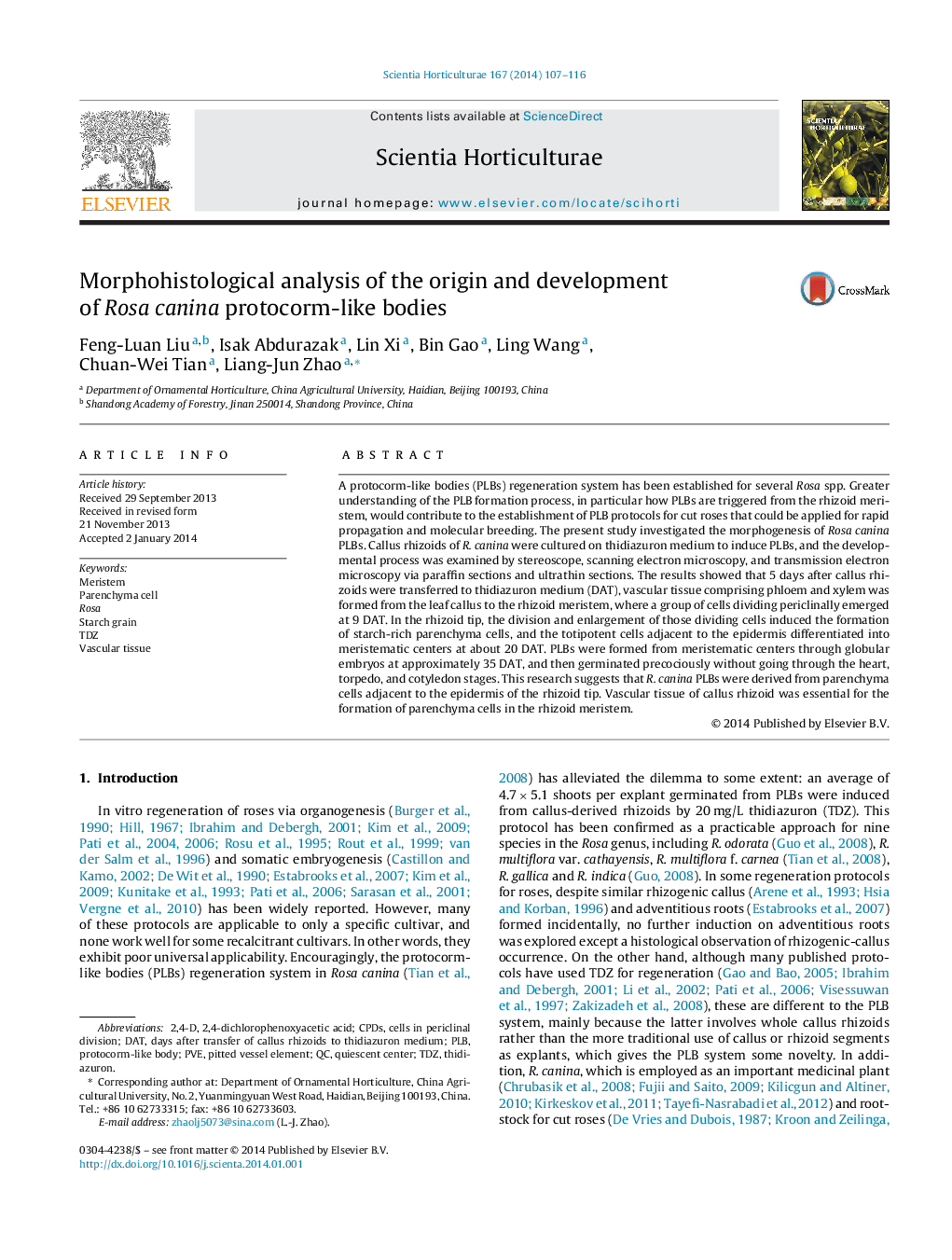| کد مقاله | کد نشریه | سال انتشار | مقاله انگلیسی | نسخه تمام متن |
|---|---|---|---|---|
| 4567016 | 1628831 | 2014 | 10 صفحه PDF | دانلود رایگان |
• We described detailedly the regeneration of Protocorm-like bodies (PLBs) from the rhizoid meristem of Rosa canina.
• PLBs were derived from parenchyma cells adjacent to the epidermis of rhizoid tip through globular embryos.
• Vascular tissue in callus-rhizoid was essential for the formation of parenchyma cells from the rhizoid meristem.
• This work will be useful to the establishment of PLBs regeneration for cut roses.
A protocorm-like bodies (PLBs) regeneration system has been established for several Rosa spp. Greater understanding of the PLB formation process, in particular how PLBs are triggered from the rhizoid meristem, would contribute to the establishment of PLB protocols for cut roses that could be applied for rapid propagation and molecular breeding. The present study investigated the morphogenesis of Rosa canina PLBs. Callus rhizoids of R. canina were cultured on thidiazuron medium to induce PLBs, and the developmental process was examined by stereoscope, scanning electron microscopy, and transmission electron microscopy via paraffin sections and ultrathin sections. The results showed that 5 days after callus rhizoids were transferred to thidiazuron medium (DAT), vascular tissue comprising phloem and xylem was formed from the leaf callus to the rhizoid meristem, where a group of cells dividing periclinally emerged at 9 DAT. In the rhizoid tip, the division and enlargement of those dividing cells induced the formation of starch-rich parenchyma cells, and the totipotent cells adjacent to the epidermis differentiated into meristematic centers at about 20 DAT. PLBs were formed from meristematic centers through globular embryos at approximately 35 DAT, and then germinated precociously without going through the heart, torpedo, and cotyledon stages. This research suggests that R. canina PLBs were derived from parenchyma cells adjacent to the epidermis of the rhizoid tip. Vascular tissue of callus rhizoid was essential for the formation of parenchyma cells in the rhizoid meristem.
Journal: Scientia Horticulturae - Volume 167, 6 March 2014, Pages 107–116
